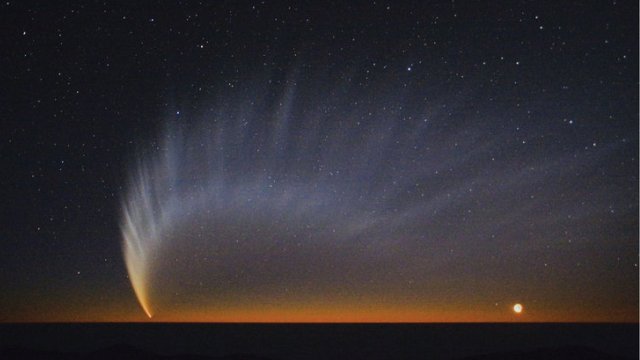The building blocks of life on Earth may have originated in space.
Chemists at the University of California, Berkeley and the University of Hawaii, Manoa have found the complex compounds essential for life can be forged in the vacuum of space. The linked pairs of amino acids, called dipeptides, may have hitched a ride to Earth on comets and meteorites.
“The first biological molecules had an extraterrestrial origin,” explains UC Berkeley chemistry Professor Richard Mathies, coauthor of the study. “That means life on Earth was inseminated by these depositions of comets.”
The question has fascinated people on Earth for centuries, Mathies says.
Scientists have long believed amino acids formed in the planet’s early oceans (think Primordial Soup). A 1952 experiment proved this. In what’s known as the Miller-Urey experiment, scientists put water, ammonia, methane and hydrogen in a series of glass tubes, electrocuted the mix (to simulate lightning) and watched it turn pink overnight as it all combined to form amino acids.
